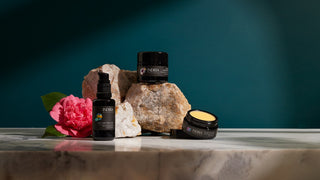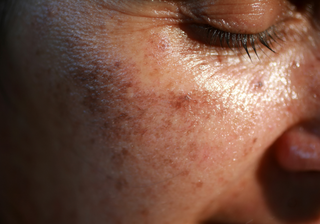Smouldering days, steamy humid nights, sticky flies that accompany your every move, and rolling ocean waves that crash with tireless energy on stunning white beaches - these are the Australian Summers we all love and dream about when the heaviness of Winter sets in.
As I’ve matured with the richness of time and all that aging offers, one change that I have noticed in my skin – apart from the fine lines, thinning of skin around my eyes, effects of gravity on my chin (I could go on!) – is a little gift from the sun called pigmentation, or ‘hyperpigmentation’ as it’s technically called. You know, those dark spots that appear as brownish blotches on the skin? If you’re over the age of 35 I’d say there’s an excellent chance you know EXACTLY what I mean, as generally speaking, this pesky skin condition features commonly on the faces of those with more wisdom under their belt!
Known as a skin condition, as opposed to a skin type, pigmentation is classified as skin patches that are abnormally dark, making skin appear uneven due to extra melanin present, where melanin is the natural pigment that gives our skin, eyes and hair their colour. Typically, melanin provides the skin with a naturally mild form of sun protection from UV rays by absorbing harmful UV to protect your skin from sun damage. When you spend time in the sun however, you skin produces more melanin to protect your skin, kinda like when you go to the gym and lift weights or played on the monkey bars as a child, your hands develop callouses to protect the skin underneath. Although harmless, much like those callouses which can be unpleasant (and unsightly), too much melanin in the skin (hyperpigmentation) can be problematic from an aesthetic perspective.
Sometimes referred to as ‘sunspots’, pigmentation commonly occurs as the result of sun damage, but can also occur due to hormonal changes (known as melasma) - often during pregnancy when female sex hormones oestrogen and progesterone stimulate the over-production of melanin - or be left after trauma to the skin has healed, usually from acne.
Most commonly, pigmentation occurs overtime as the result of natural aging and normal sun exposure which is why most people associate pigmentation with aging skin. Interestingly, as skin ages, melanin production typically reduces, however existing sites of pigmentation tend to increase in size and intensity.
So how can I treat pigmentation I hear you ask?!
First and foremost, like most things in life, prevention is key. Sun protection with high UVA inhibiting characteristics can be your best strategy in staving off pigmentation. It’s worth noting that given time and protection from the sun, pigmentation that can slowly fade also, however this takes consistency, patience and the prevention of further pigmentation.
Although some people have experienced great success with more aggressive treatments, a common scenario called ‘rebound pigmentation’ can occur, where irritation from peels, lasers etc can cause new pigmentation that may a notch up from the original pigmentation! On the other hand, some aggressive treatments may also reap fantastic reward. It is imperative to ensure that any aggressive treatment is done under the watchful eye of a trained professional who is experienced in treating hyperpigmented skin.
To help combat pigmentation without dermatological oversight, there are some fantastic options available in less harsh forms, where actives such as Vitamin C rich oils such as organic Rosehip and Seabuckthorn, Vitamin A rich oils such as Apricot Oil, niacinamide and AHAs such as the native botanical Lime Pearl can all help deliver impressive non-aggressive solutions.
Given how commonplace pigmentation is particularly here in Australia, we have spent much time developing a fantastic product to help address skin pigmentation. Our Pigmentation Serum contains a blend of active ingredients that are clinically proven to reduce pigmentation by 28% over a period of 12 weeks. Combining Aloe Vera to heal the skin, a carefully formulated array of varying molecular weighted hyaluronic acid that allow actives to penetrate the epidermis at varying depths, plus a distinct combination of gentle but effective essential oils to tie this unique serum together, our Pigmentation Serum provides a brilliant everyday option that can bring about a noticeable improvement to help reduce skin pigmentation.
Another tip we recommend is to pair our Pigmentation Serum with regular use of our Exfoliating Cream to gently buff away the outer layer of the epidermis (known as the stratum corneum) to not only help even skin tone, but allow or the more effective penetration of our serum for day use and Repair Oil for night use, which can help speed the healing process of the skin. Noting the skin naturally slows its exfoliating abilities as we age, our Exfoliating Cream is a secret weapon in helping to maintain smooth skin.
With this simple and effective routine, pigmented skin can be very effectively treated with patience and persistence. Like anything in life, to expect a complete miracle of vanishing pigmentation is unrealistic, however a considered and regular approach with a targeted skincare strategy can have a huge impact.



